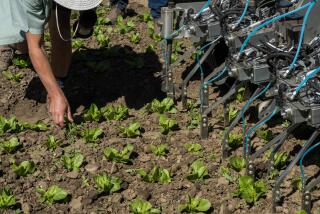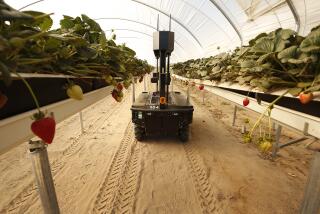Without Biotechnology, We’ll Starve
I agree with Greenpeace that we need to feed and clothe the world’s people while minimizing the impact of agriculture on the environment. But the human population continues to grow, while arable land is a finite quantity. So unless we will accept starvation or placing parks and the Amazon Basin under the plow, there really is no alternative to applying biotechnology to agriculture.
Today’s biotechnology differs significantly from previous agricultural technologies. Using genetic engineering, scientists can enhance the nutritional content, vitamins, minerals, antioxidants, texture, color, flavor, growing season, yield, disease resistance and other properties of production crops. Engineered microbes and enzymes produced using recombinant DNA methods are used in many aspects of food production. The cheese and bread you eat and the detergent you use to clean your clothes all have used engineered enzymes since the early part of this decade.
By reducing dependency on chemicals and tillage through the development of natural fertilizers and of pest-resistant plants, biotechnology has the potential to conserve natural resources, prevent soil erosion and improve environmental quality. Strains of microorganisms could increase the efficiency, capacity and variety of waste treatment. Bioprocessing using engineered microbes offers new ways to use renewable resources for materials and fuel.
Biotechnology is, in fact, the low-risk alternative to current practices. Take pest control. The economic and environmental costs of using existing methods are well known. But many of us are not aware of the potential costs of not controlling pests. Not controlling fungal disease in plants, for example, allows them to generate deadly toxins such as aflatoxin and fumonisin, which have been found, among other things, to cause brain tumors in horses and liver cancer in children.
The most cost-effective and environmentally sound general method for controlling pests and disease is the use of DNA. This approach already has led to a reduction in the use of sprayed chemical insecticides. According to the National Agricultural Statistics Service, 2 million fewer pounds of insecticide were used in 1998 to control bollworm and budworm than were used in 1995, before “Bt” cotton was introduced. And the Bt gene--introduced into the crop plant, not sprayed into the atmosphere--is present in minute amounts and spares beneficial insects.
There is no evidence that recombinant DNA techniques or rDNA-modified organisms pose any unique or unforeseen environmental or health hazards. In fact, a National Research Council study found that “as the molecular methods are more specific, users of these methods will be more certain about the traits they introduce into plants.” Greater certainty means greater precision and safety. The subtly altered products on our plates have been put through more thorough testing than any conventional food ever has been subjected to. Many of our daily staples would be banned if subjected to the same rigorous standards. Potatoes and tomatoes contain toxic glycoalkaloids, which have been linked to spina bifida. Kidney beans contain phytohaemagglutinin and are poisonous if undercooked. Dozens of people die each year from cynaogenic glycosides from peach seeds. Yet none of those are labeled as potentially dangerous.
Millions of people have eaten the products of genetic engineering and no adverse effects have been demonstrated. The proper balance of safety testing between companies and the government is a legitimate area for further debate. So are environmental safeguards. But the purpose of such debate should be to improve biotech research and enhance its benefits to society, not stop it in its tracks.





